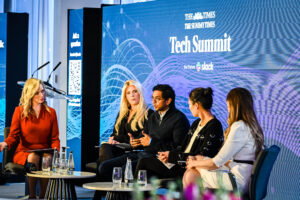While Covid-19 has curtailed many celebrations over the past two years, Easter has suffered more than most occasions from unfortunate timing.
Easter 2020 occurred two weeks into the first national lockdown, resulting in a muted appetite for celebration and a 171% YoY decrease in consumer spending.
And, while its 2021 iteration allowed for outdoor gatherings and the proportion of people gifting returned to pre-pandemic levels, persistent restrictions curbed consumer spending at 62% of the 2019 total.
Easter's new normal
Yet in 2022, Easter is set to benefit from being the first seasonal occasion in more than two years to be celebrated without pandemic restrictions, allowing the nation to finally get a taste of post-pandemic liberation.
IRI Client Director Claire James recently declared that, “Easter 2022 is likely to be the most normal seasonal event we have seen since the pandemic began.”
But what does a ‘normal’ Easter look like and how will current consumer attitudes impact its 2022 iteration?
1. Experiences Dominate Spending
Unlike other major holidays, even before the pandemic many eschewed the pressure of gifting over Easter and spent more on activities (£113 on average) than gifts (£67) as a way of sharing experiences together.
This disparity is likely to grow in 2022, with over 1 in 4 of Brits indicating that since the pandemic, they are prioritising spending money on experiences rather than possessions.
2. The Roast Renaissance
With multi-household family gatherings on the table once more, the most popular of Easter experiences, the traditional Easter roast, will be making a grand comeback.
A rise in culinary experimentation and indulgent food consumption throughout the pandemic has been such that 41% of the nation agrees that food is more important to them than it was before Covid-19.
This pent-up appetite is such that both take-home options and hospitality bookings should return towards 2019 levels and despite the cost of living crunch, premium options will be in high demand.
Retailers reported a surge in their premium product lines throughout the festive season, with many families looking to make up for postponed gatherings throughout 2020 and 2021 or elevate their regular dining experience.
3. The Return of the Easter Getaway
As the first Bank Holiday of the year, Easter typically represents an early opportunity for the nation to get away and unwind. 15 million Britons took a holiday or short break away over Easter in 2018 and almost half of the £1.1 billion spent over the weekend was on an Easter getaway.
With travel restrictions forcing many to forego holidays over the past two years, Easter 2022 is the first opportunity to make up for lost time, something that over half of the nation has expressed a desire to do.
Recent TGI research shows that Times and Sun readers are 26% and 5% more likely, respectively, to be planning a holiday for April.
4. The Perfect Opportunity for Some DIY
Closer to home, the Easter Bank Holiday weekend is often a key opportunity for home improvers.
Across 2021, UK Google searches for ‘DIY’ peaked in the lead up to Easter weekend. April was also the most popular month for ‘DIY’ content across TheSun.co.uk in 2021, with page views almost 2x higher than March or May.
With Easter this year falling later in April and hopes of proper spring weather, 2022 is shaping up to be ideal for Times and Sun readers, who are 35% and 15% more likely, respectively, to be planning to spend more than £1,000 in home improvements in the next 6 months.
5. A Nation in Need of Novelty
Confectionery, the most conspicuous Easter gifting category, was also the most resilient throughout the pandemic.
Much of this was due to the popularity of novelties, which dramatically outstripped overall confectionery growth in 2021, and were up 40% on 2019.
This is reflective of a wider consumer trend, where having endured lockdown and leisure restrictions, the nation is eager to find new and novel experiences in their daily lives.
According to Foresight Factory, the search for ‘Everyday Serendipity’ is the fastest growing trend among Times readers and one of the top five among Sun readers.
With the mood of the nation again dropping significantly throughout the first quarter of 2022, novelty assumes even greater power.
6. Memories of Easters Past
Conversely, nostalgia has become an increasingly effective lever. In 2019, NRF found that ‘tradition’ is most likely to inspire Easter shopping, making it more effective than sales, displays, promotions, events, new and exclusive products or social activities.
Since then, mandated downtime and a seemingly endless barrage of bad news has prompted many to seek further comfort and solace in memories of moments past.
Over this time, our audience has been looking for brands to convey a sense of nostalgia, particularly throughout seasonal holidays.
Across 2021, 22% of Sun readers were keen for brands to adopt a nostalgic tone, doubling to 44% over the Christmas period. (Source: News UK Data Hub - Christmas & Retail Reader Panels 2020 & 2021). Seasonal nostalgia also has cross-generational appeal.
While Easter egg hunts and traditional Easter activities are a sure-fire hit with young families, evoking memories of Easters’ past can also be an effective way to bring back middle-aged demographics who are more likely to be lapsed gifters and engage with Easter’s most disproportionately active consumer segment, Grandparents.
7. HFSS - One Last Hurrah or A New Beginning?
Yet no amount of tradition can obscure the fact that Easter is changing. The government’s upcoming HFSS clampdown means that 2022 is the last Easter that confectionery brands can rely on off-shelf sitting alone to drive impulse and volume.
And while e-commerce has accelerated significantly over the past two years and online channels are a valuable inspiration window, according to Kantar it accounted for less than 10% of Easter sales in 2021 (compared with almost 13% of overall grocery sales during this time).
The vast majority of Sun and Times readers are inclined to buy products on impulse, but also agree that “Once I find a brand I like I tend to stick to it”.
As a result, brands that can make an impression on our typically impulsive audiences in the lead-up to Easter 2022 will be well-placed to benefit for many Easters to come.



 News UK
News UK 






